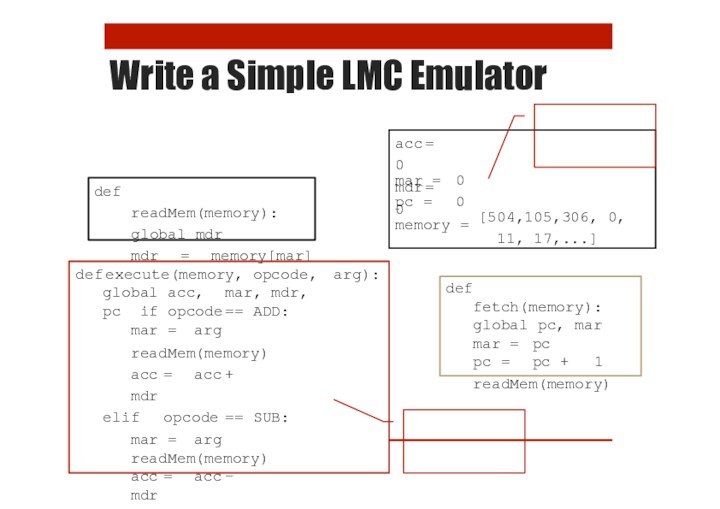how a computer work
To program the LMC, must understand:
Memory
addressesInstructions
Fetch-execute cycle
Practical exercises
What we can learn from LMC
FindSlide.org - это сайт презентаций, докладов, шаблонов в формате PowerPoint.
Email: Нажмите что бы посмотреть













![Assembly language Load and Store InstructionLDA AddressSTA AddressMove data between memory and accumulator (ACC)Load: ACC ß Memory[Address]Store: Memory[Address] ß ACC](/img/tmb/15/1428049/37bbfbf9821c125e5a7ec4e49b7c418b-720x.jpg)
















![Assembly language Understanding Variables and AssignmentWhat is a variable?What is on the left hand side of:A[x+1] = 42](/img/tmb/15/1428049/d4d4ceb8796b140103d660e40d5791e3-720x.jpg)






Read register
Write to register
Instruction
MEM Data
ALU
Accumulator
Control
Unit
m
e
m
o
r
y
address
data
Control Unit
ALU
INP
1 (Address)
OUT
2 (Address)
BR
Address
Location
Start
Decode & execute instruction
Fetch next instruction
Halt
Program Counter
Address
Instruction
Data
Accumulators
m
e
m
o
r
y
address
data
Control Unit
ALU
1
2
3
4
5
5
6
ALU
Control
Unit
assembly code
object code